With the arrival of March we can definitely say that spring is here. The daffodils are well and truly out as are crocuses. We understand that the first lambs have been born, although those of us who don’t have lambs nearby will just have to take others word for it.
March is a time for optimism and hope. With more than 20 million people having received their first vaccine and restrictions starting to ease within a month, there is much to be optimistic about.
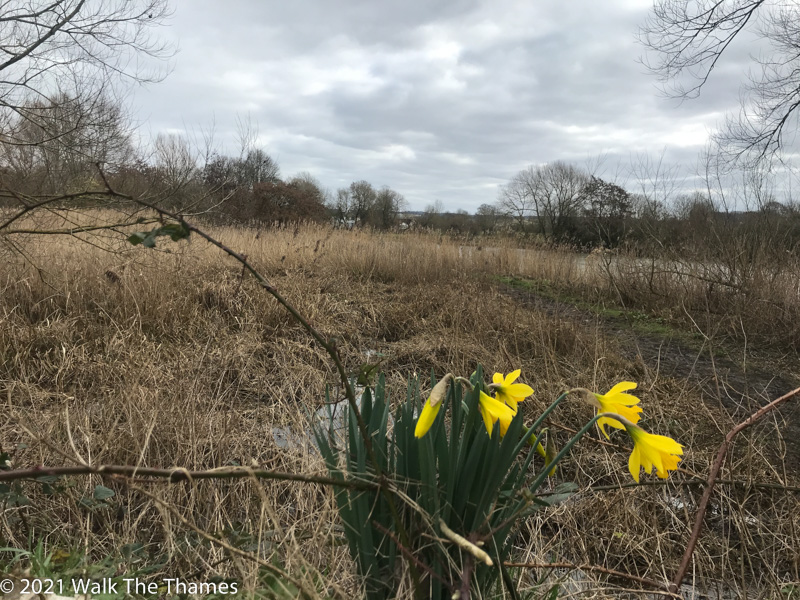
The Henley Literary Festival has been set for October 2 – 10. Whilst the program is still to be announced, judging by 2019’s line-up (Theresa May, Paul Merton, Mary Berry and Sir Alastair Cook amongst others) it promises to be a great affair.
A reminder that a series of talks on Turner will be held in April entitled Turner’s Sandycombe Years. For more details, see here.
Our next online event will be the usual time of 7pm on Thursday March 11. This will be an overview of the Thames Path. It is a repeat of one we did in February although we might vary the format a little.
The following week (March 18) we will be continuing our exploration of the Thames Path by virtually walking from Oxford to Dorchester.
Click on the link to register for either event.
Thames Water has been fined £2.3m for polluting a Henley stream that feeds the Thames with partially-treated sewage. The sewage had unsafe ammonia levels and led to the death of over 1,000 fish.
The offence, which took place in 2016, has put renewed focus on campaigns to have water companies publish, in real-time, whenever sewage is discharged to rivers. Thames Water has racked up fines of £24.4m for similar offences since 2017.
For more information on the cleanliness of the Thames, please see our blog.
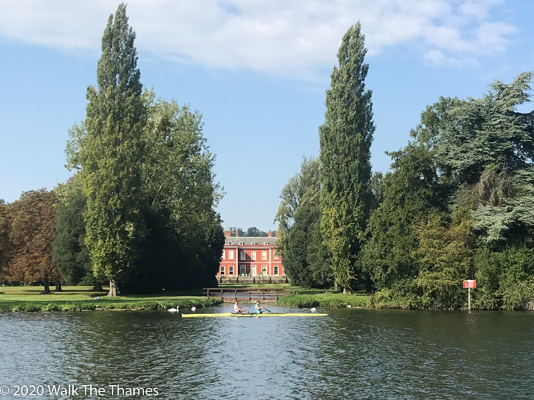
We have had little rain in the past two weeks and the paths are drying out. Nonetheless there is still surface water in some places and the paths remain quite muddy.
Cotswold Water Park has been given a grant to fund the development of six cycle routes covering a distance of more than 90 miles. Some of the routes will use the former Swindon to Cirencester railway line. Thames Path walkers will be familiar with this as the the Path crosses the railway line near Hailstone Hill.
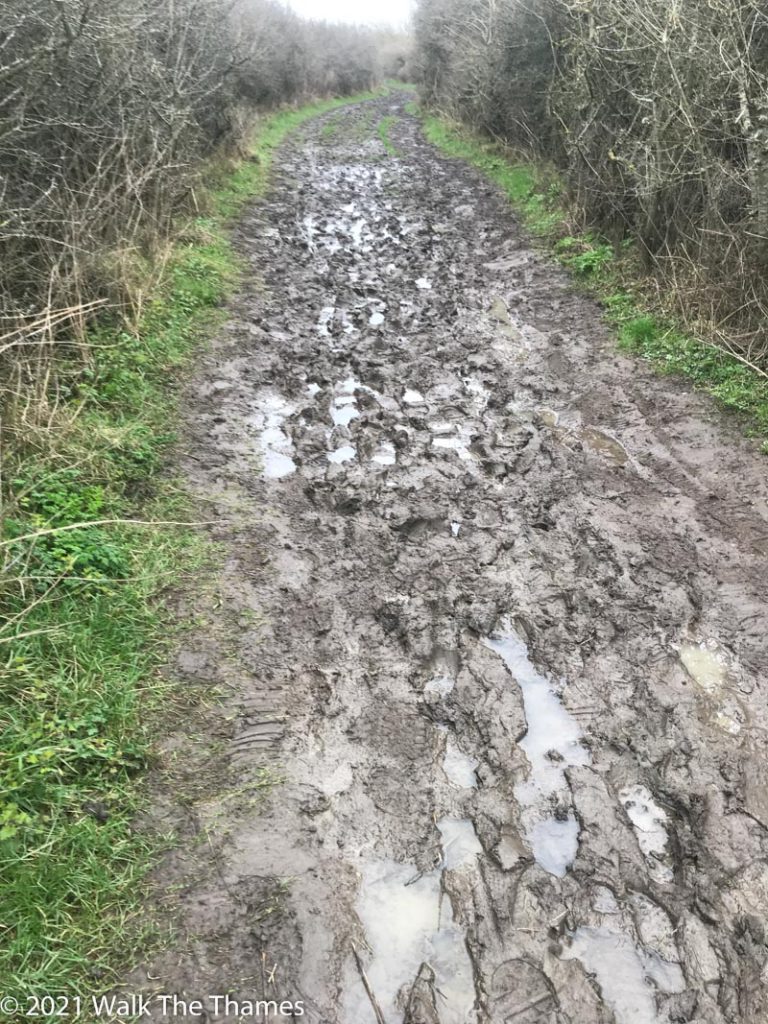
As we finally start handling bookings and are back in contact with hotels, we have some news to report.
The Miller of Mansfield in Goring, which was damaged by fire last autumn, will be re-opening as a hotel on May 17 along with everyone else.
The Beetle and Wedge in Moulsford commenced a major refurbishment shortly before last year’s lockdown. This has now been completed. However, the prices have risen (as the standard of accommodation is higher). We have therefore changed the category on our Route Planner from Bronze to Silver.
The Wheatsheaf, on Oxford’s High Street, well known for its intimate live gigs, is set to close if the council approves the owner’s application to convert the building into student flats. More than 100 objections to the planning application have been submitted.
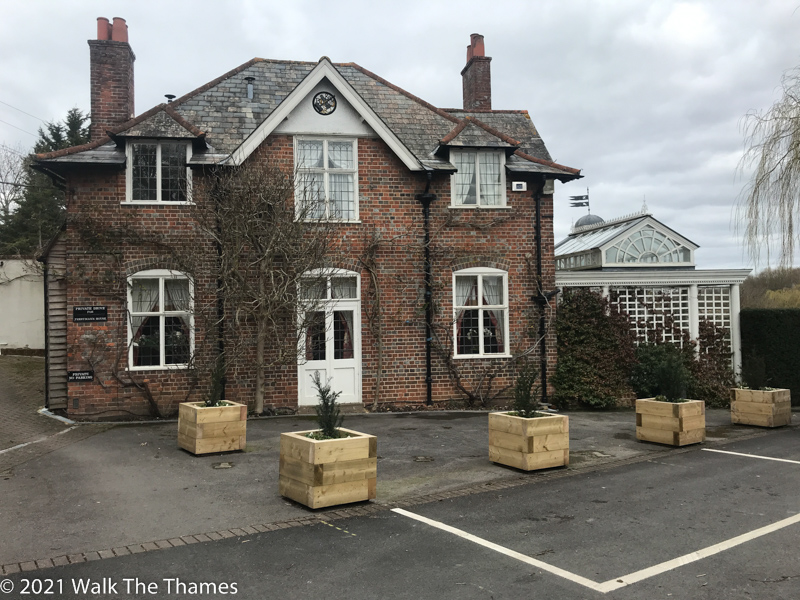
Readers of this newsletter will know, each week, we write about a section of the Path. This has been particularly difficult during lockdown as we try to do this “in real-time”. So we’ve tried to keep it as local to us as possible (local being Purley on Thames/Mapledurham).
In recent weeks we’ve covered from Pangbourne to Reading including a special feature on Reading town centre. This week we decided to go upstream. We covered the section from Goring to Pangbourne back in August, so the next stretch we wanted to cover is Wallingford to Goring.
Wallingford is a good place to stop, being a pleasant two days and 23 miles from Oxford. We covered much of what there is to see on Wallingford in our newsletter of September 23 so we will not repeat that here.
The downstream Path from Wallingford goes through the town’s backstreets. That’s not to say it’s not pleasant. Quite the contrary, it follows Thames Street towards St Leonard’s, Wallingford’s oldest church. The Path goes through the churchyard, across a stream to arrive at Lower Wharf. There are some lovely old buildings.
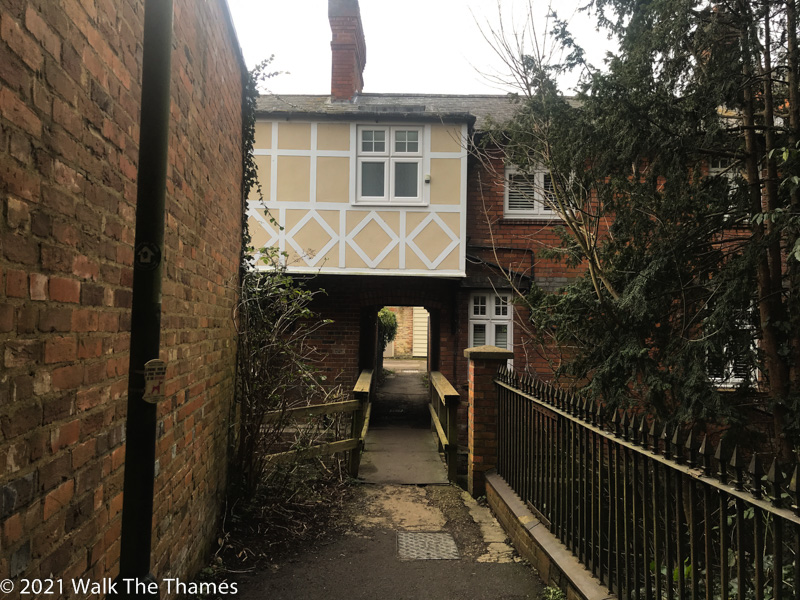
We rejoin the river at Lower Wharf and soon reach the Oxford University Boat Club. The building was purpose built following the destruction of their old boat house in 1999 by fire.
As we walk on, with the river on our left, we see houses to our right. We are, in fact, walking though their back gardens so try to avoid sitting on their garden furniture – no matter how inviting they might appear. The houses become older as we get further away from Wallingford. These properties are on Winterbrook and one of them belonged to Agatha Christie. Whilst the house is easily seen from the front, it may take some guesswork to know which one it is from the back.
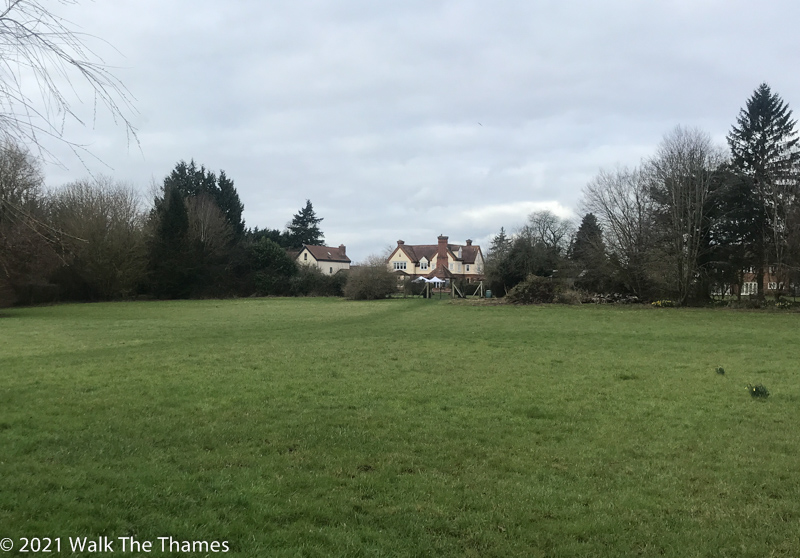
The Path crosses under the busy A4130 known as Nosworthy Way. It is possible to get onto the road here although there’s little incentive. So we carry on and a few yards further downstream we see a collection of buildings across the water.
This is Mongewell Park. The original house was built in the 18th century but replaced in 1890. The house served as a hospital for wounded soldiers during World War I and then as headquarters for No 2 Group RAF of Bomber Command. After the war it became Carmel College, a Jewish boarding school. Sometimes referred to as “Jewish Eton”, the businessman Philip Green and film director Roland Joffe were both educated there. The Centre for Agriculture and Bioscience International (“CABI”) took over the building but then sold it to Cala Homes who plan to demolish the building for new homes.
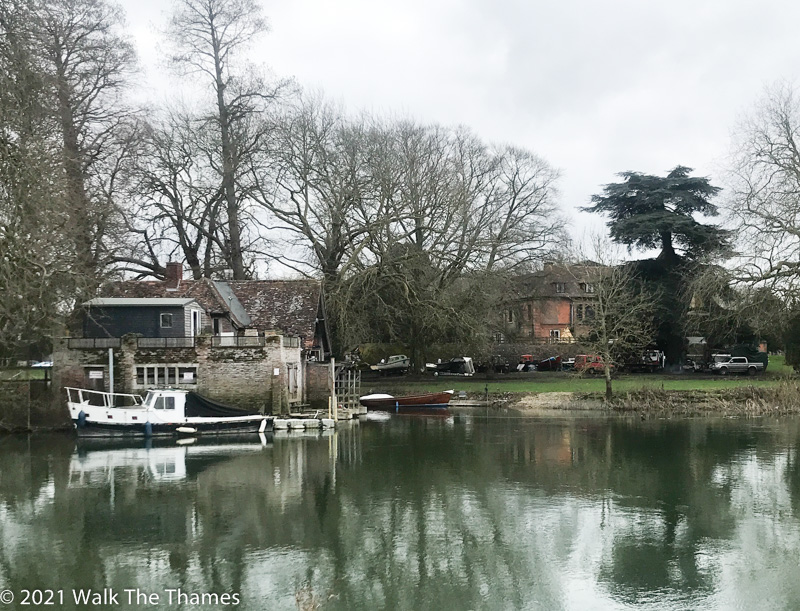
The Path follows the river through meadows and, 2.5 miles form Wallingford, we can just about see the village of North Stoke across the water. Springs Golf Club is also visible, famous for its guitar-shaped swimming pool built by former owner and Deep Purple member, Ian Gillan.
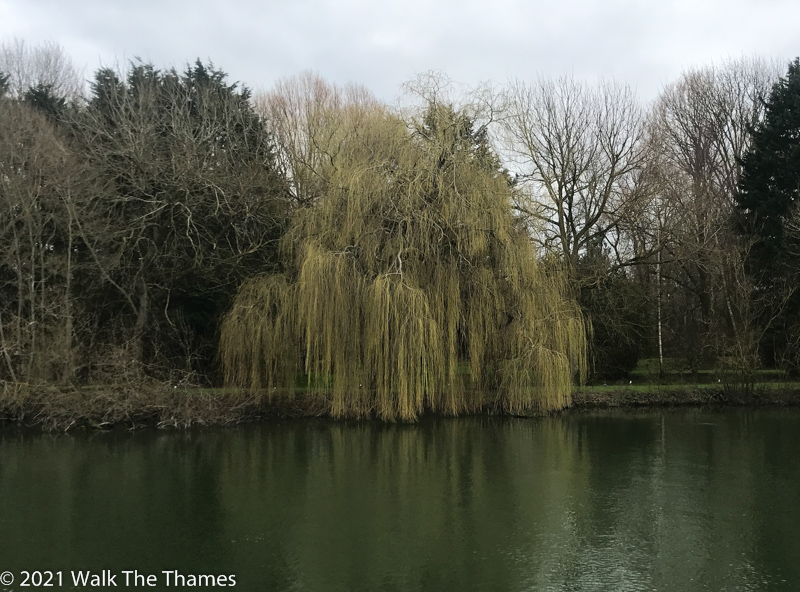
We now enter Cholsey Marsh, a nature reserve under the management of Berks, Bucks and Oxon Wildlife Trust (“BBOWT”). The reserve is home to great crested grebes, warblers and a colony of Desmoulin whorl snails. It is also home to a large collection of Teasels. Being a marsh, it is damp underfoot. In fact, this is one of the muddiest sections on the Path.
On your right in the distance is Cholsey Meadows, a large housing development formed from what used to be Fairmile Hospital, the “County Lunatic Asylum for Berkshire” opened in 1870. Despite its sad history, the original building is quite impressive.
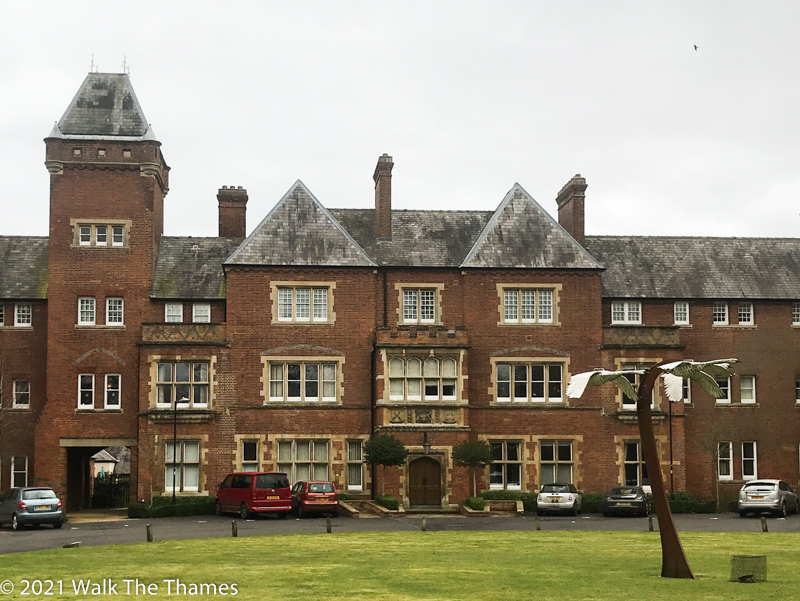
Halfway through the marsh is Ferry Lane, which takes you to Cholsey a mile away. As the name would suggest, a ferry used to operate here, carrying passengers to Little Stoke across the river. The towpath carries on down the left bank until it crosses back over at the Beetle and Wedge. As the last ferry has long since departed, we are forced to divert from the river, just past the railway bridge, through Moulsford. You might see walkers on the other side as the Ridgeway runs from Goring to Mongewell before heading away from the river into the Chilterns.
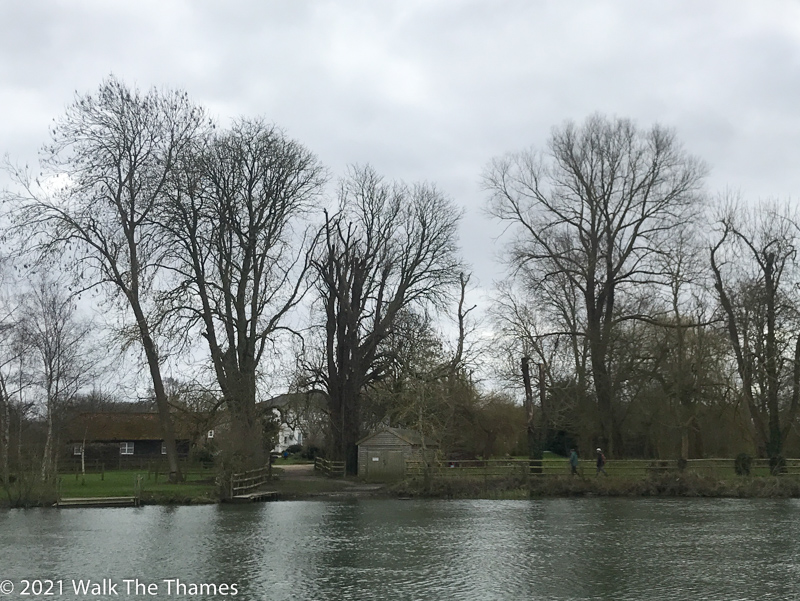
But just before we leave the river, we get to walk under Moulsford Railway Bridge. Known as “Four Arches” this is a pair of parallel bridges carrying the Great Western Railway from London Paddington to Bristol and Wales. It is grade II listed and was originally built by Isambard Kingdom Brunel in 1839 to carry a pair of tracks. When it was decided that two more tracks be added, a second bridge was built in 1892 parallel to the first.
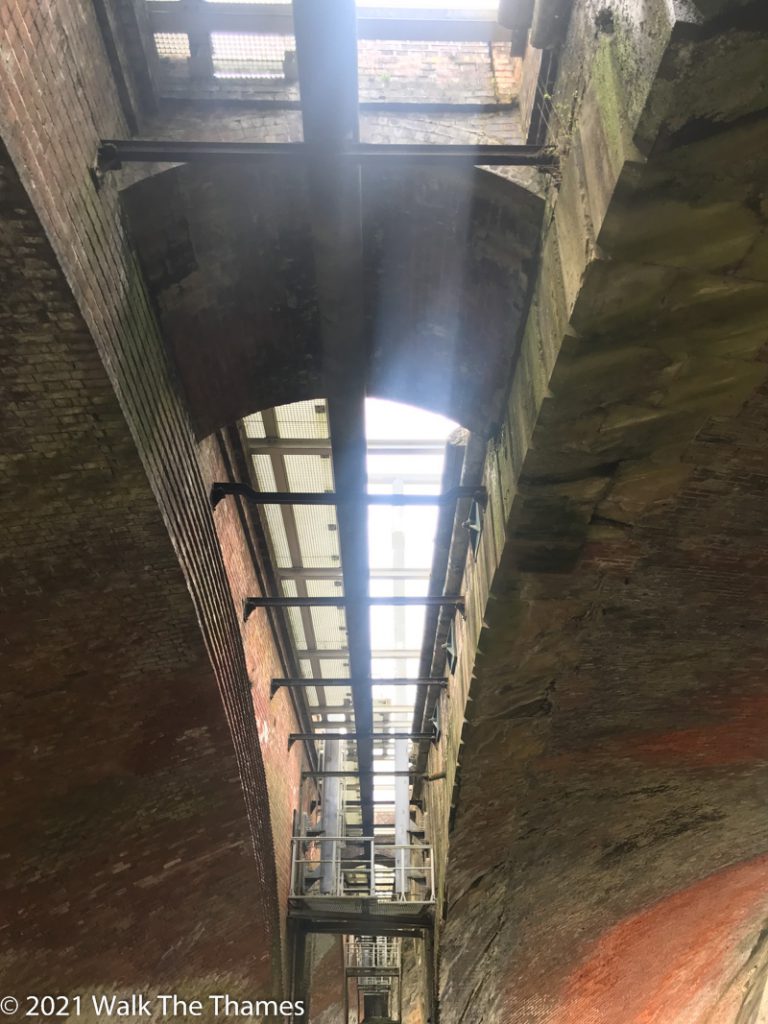
I got into a spot of bother with a lady who objected to my description of Moulsford as “a rather disappointing village”. In my defence I did go on to write “…as you will have to walk 0.7 miles along the busy A329 (pavement provided), there are NO facilities except for a petrol station located 0.2. miles north of where the footpath meets the road”. All of which is correct.
To be fair to her, I did omit the fact that there is a beautiful church here, St John the Baptist, just 500 feet from the road. It was built in the mid-19th century to a design by Sir George Gilbert Scott who also designed Reading Gaol. The western wall and the timber bellcote were both retained from the mediaeval structure it replaced. It looks older than it actually is.
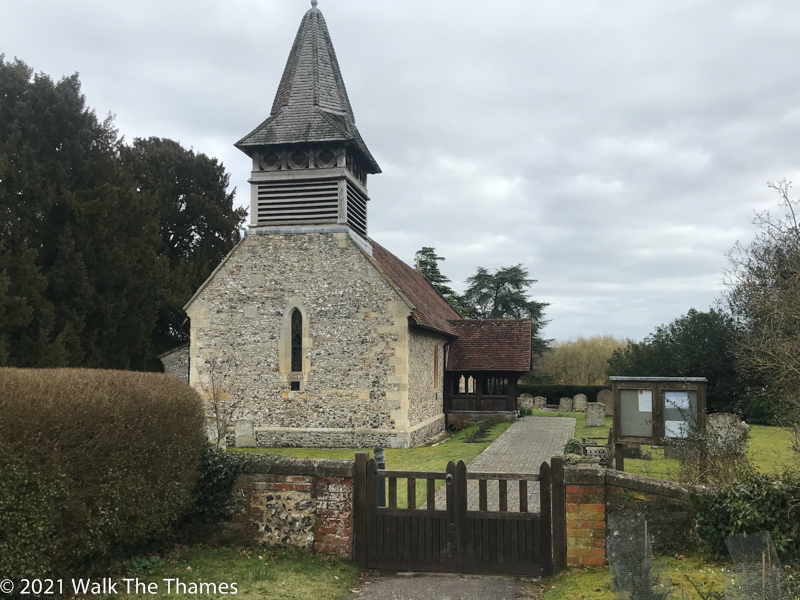
At the end of the village the Path turns left down another Ferry Lane to rejoin the river at the Beetle and Wedge. There is mention of this hotel in our Accommodation and Hospitality section. Its situation is quite magical sitting on the water, opposite the village of South Stoke, where once a ferry used to operate.
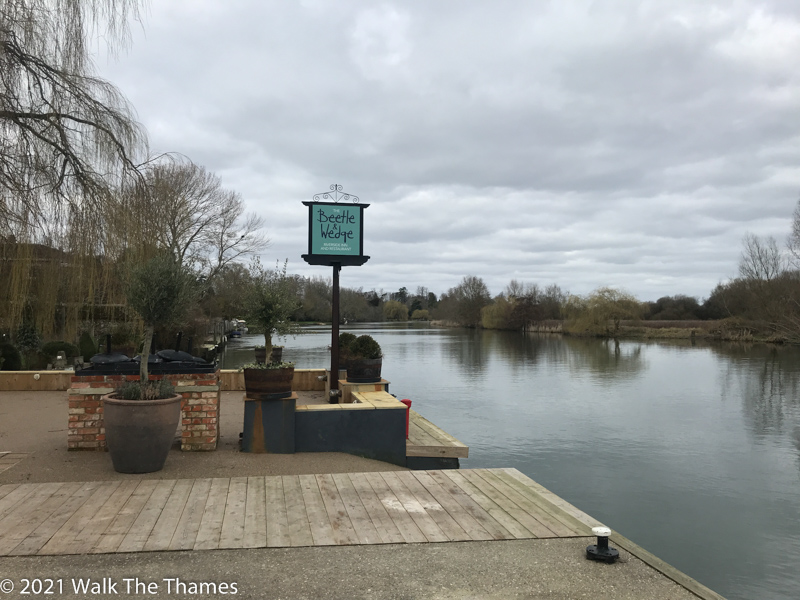
We are walking through a wide meadow heading towards Cleeve Lock. Past a sailing club and a lovely riverside restaurant, Don Giovanni at the Leatherne Bottle, both on the other side, we arrive at the lock. It was here, in the lock-keepers cottage, that Pete Townshend wrote much of the music for Quadrophenia. He also owns the island next door whose current occupants appear to be a collection of Canadian Geese.
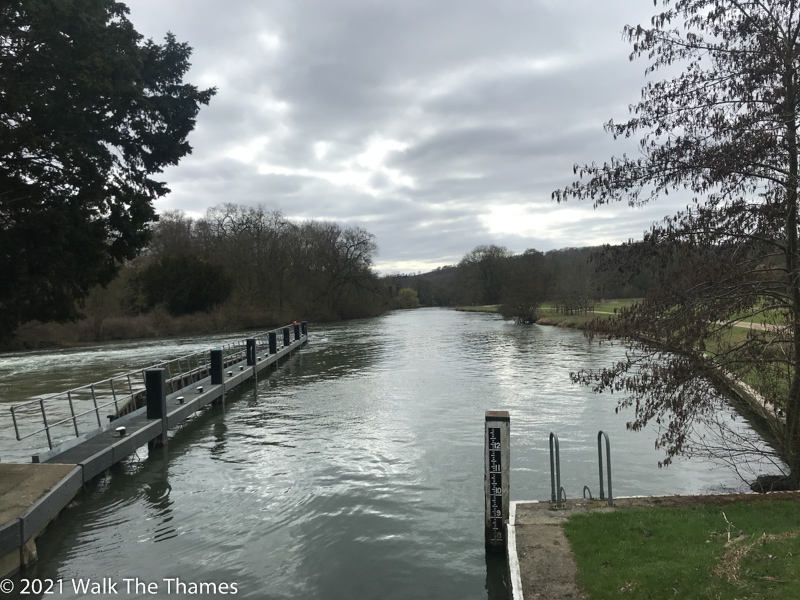
We’re on the home straight now. There are some beautiful riverside homes all on the opposite bank. On our side, we are graced with a modern apartment complex filled with signs telling us what we cannot do: No mooring, cycling, swimming, fishing. Presumably no ball games in the grounds. It was all rather quiet. The croquet lawn was devoid of children.
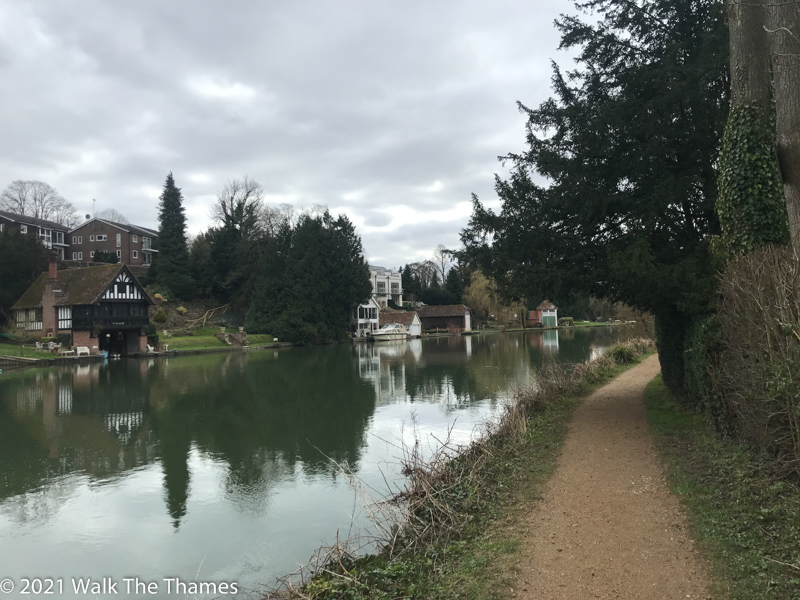
We have arrived at Streatley. Although there is quite a bit to see along the way, this stretch of 6.7 miles is not the Thames Path at its best, particularly considering that nearly a mile is on the road. We made mention of the Ridgeway on the other side. There is no reason why you could not cross the river at Nosworthy Way and follow the Ridgeway all the way to Goring. That would avoid the Moulsford road walk and take you through the pretty villages of North and South Stoke, one of which has a pub. And you still get to walk under Moulsford Railway Bridge. We plan to add this option to our Thames Path detours.
Less than a week after featuring Reading Gaol in our newsletter, and highlighting the rather pathetic tribute to Oscar Wilde, a painting has mysteriously appeared on the perimeter wall of Reading Gaol. The painting, which was yesterday confirmed to be by Banksy, features Wilde climbing down the wall with a typewriter. A fitting tribute.
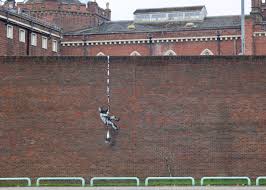
That’s all folks. Stay safe.
Ready to book?
| Cookie | Duration | Description |
|---|---|---|
| cookielawinfo-checkbox-analytics | 11 months | This cookie is set by GDPR Cookie Consent plugin. The cookie is used to store the user consent for the cookies in the category "Analytics". |
| cookielawinfo-checkbox-functional | 11 months | The cookie is set by GDPR cookie consent to record the user consent for the cookies in the category "Functional". |
| cookielawinfo-checkbox-necessary | 11 months | This cookie is set by GDPR Cookie Consent plugin. The cookies is used to store the user consent for the cookies in the category "Necessary". |
| cookielawinfo-checkbox-others | 11 months | This cookie is set by GDPR Cookie Consent plugin. The cookie is used to store the user consent for the cookies in the category "Other. |
| cookielawinfo-checkbox-performance | 11 months | This cookie is set by GDPR Cookie Consent plugin. The cookie is used to store the user consent for the cookies in the category "Performance". |
| viewed_cookie_policy | 11 months | The cookie is set by the GDPR Cookie Consent plugin and is used to store whether or not user has consented to the use of cookies. It does not store any personal data. |